Disclosure: This article contains affiliate links. We may earn a commission from purchases at no extra cost to you, which helps our travel content.
The rhythmic clacking of looms fills the air as I navigate through narrow alleys lined with rolls of fabric in every imaginable hue. My fingers instinctively reach out to feel the textures—silks that flow like water, cottons with the perfect weight, and embroidered pieces that tell stories through thread. Faisalabad, often called 'Pakistan's Manchester' for its textile prowess, isn't just a manufacturing hub—it's a sensory wonderland for fabric enthusiasts and a treasure trove for business buyers seeking quality textiles at remarkable prices.
Understanding Faisalabad's Textile Landscape
Before diving into Faisalabad's fabric scene, it helps to understand why this city matters so much in the global textile conversation. As Pakistan's third-largest metropolitan area, Faisalabad generates approximately 20% of the country's entire export revenue through its textile industry. The city's relationship with textiles dates back to pre-partition times, but it was during the 1960s that Faisalabad (then called Lyallpur) transformed into the powerhouse it is today.
My first visit here reminded me of triage in the ICU—overwhelming at first glance but revealing its organized patterns once you know what to look for. The textile ecosystem here operates on multiple levels: industrial mills producing for international brands, mid-sized operations creating for domestic markets, and small family-run workshops specializing in traditional techniques.
Before setting out, I recommend investing in a good fabric reference guide to help identify different materials and qualities when you're in the thick of negotiations. Having tangible references has saved me from many potential purchasing mistakes!

💡 Pro Tips
- Learn basic textile terminology in Urdu (especially numbers for bargaining)
- Wear comfortable shoes with good support for hours of market exploration
- Carry fabric swatches of what you're trying to match if buying for specific projects
Navigating Ghanta Ghar and the Eight Bazaars
My textile adventures in Faisalabad always begin at Ghanta Ghar (Clock Tower), the city's iconic landmark and the nucleus of eight bazaars that radiate outward like spokes on a wheel. This octagonal marketplace system dates back to British colonial times, and each bazaar specializes in different goods.
For fabric hunters, Katchery Bazaar and Aminpur Bazaar are gold mines. During my first visit, I spent nearly five hours in these two areas alone, mesmerized by the selection. The vendors here arrange fabrics in cascading displays that remind me of color therapy rooms—vibrant silks and cottons creating a therapeutic visual feast.
I've found that carrying a fabric measuring tape is essential for quick measurements. When examining potential purchases, I also bring a small portable UV light to check fabric quality—synthetic blends often fluoresce differently than pure natural fibers, revealing mislabeled materials.
Don't be intimidated by the maze-like structure of these bazaars. Getting lost actually led me to discover a small shop specializing in hand-block printed cottons that have since become staples in my design projects back in Spain.

💡 Pro Tips
- Visit on weekday mornings (Tuesday-Thursday) for fewer crowds and more attentive vendors
- Take photos of shop exteriors to help remember where you found specific fabrics
- Bring small denomination Pakistani rupees for easier transactions
Mastering the Art of Textile Negotiation
In Faisalabad's fabric markets, the sticker price is merely a conversation starter. As a nurse, I've learned that good communication is essential in high-stakes situations, and textile negotiation here is surprisingly similar. My first attempts at bargaining were awkward at best, but I've since developed a system that works consistently.
Start by establishing rapport—I always ask about the vendor's family or comment on their beautiful merchandise before diving into price discussions. When quoting prices, vendors typically start 30-50% higher than what they expect to receive. My strategy is to counter with about 60% of their initial offer and work toward meeting in the middle.
Keep a currency converter handy on your phone to quickly calculate conversions during negotiations. I've found that showing genuine interest in the craftsmanship often leads to better prices than aggressive bargaining.
For bulk purchases, always ask for a sample piece first. On my last trip, I requested a meter of hand-loomed cotton before committing to buying 30 meters. This allowed me to wash and test the fabric for colorfastness and shrinkage—saving me from a potentially costly mistake when the blue dye bled significantly after the first wash.
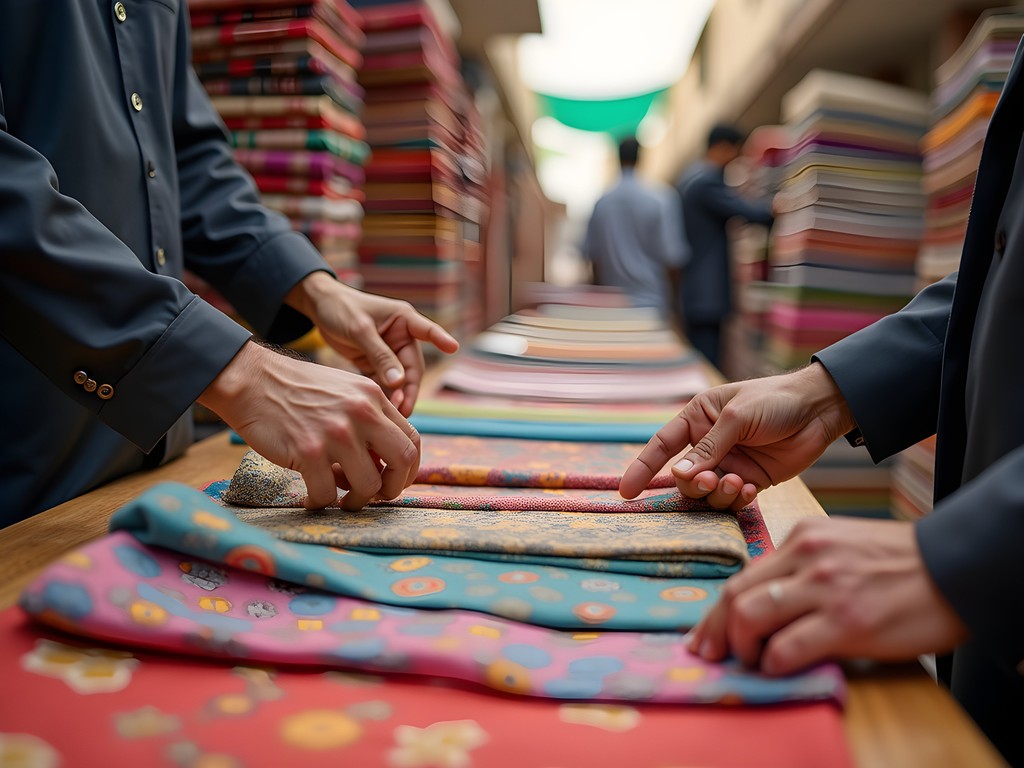
💡 Pro Tips
- Never show too much enthusiasm for a specific fabric—maintain a poker face
- Be prepared to walk away (often this results in the vendor calling you back with a better price)
- Bundle multiple purchases from one vendor for steeper discounts
Beyond the Bazaars: Factory Direct Shopping
While the bazaars offer unmatched variety, my most significant fabric finds have come from venturing beyond them to factory outlets and workshops on the city's outskirts. These direct-source venues often provide better pricing for larger quantities and sometimes allow you to witness the production process firsthand.
The Sitara Chemical Industries and Kamal Limited outlets on Sheikhupura Road offer factory-direct pricing on high-quality cotton and blended fabrics. My first visit to these facilities was a revelation—seeing the journey from raw cotton to finished textiles gave me a profound appreciation for the craft that no amount of market shopping could provide.
For these excursions, I always pack my fabric swatch organizer to keep track of samples and corresponding vendor information. When visiting factories, having business cards or a digital business card ready for exchange can open doors to wholesale pricing structures not offered to casual shoppers.
One particularly memorable experience was visiting a small family-run workshop specializing in 'khaddar' cotton weaving. The owner showed me how they still use traditional techniques alongside modern methods, creating fabrics with a character and durability I haven't found elsewhere. That visit resulted in a collaboration shipping their textiles to design studios in Seville—a connection I would never have made had I stayed in the main markets.

💡 Pro Tips
- Email larger factories in advance to arrange tours and direct purchasing opportunities
- Bring your own bags for purchases as packaging is often minimal
- Request documentation of fabric composition and care instructions for business imports
Shipping Your Textile Treasures Home
After amassing your fabric collection, the next challenge is getting it home—a logistical puzzle I wasn't prepared for on my first visit. Now, I arrive with a luggage scale to avoid airport surprises and a clear understanding of my airline's weight allowances.
For larger purchases, Faisalabad has several shipping options. Pakistan Post offers the most economical service, though delivery times can stretch to 3-4 weeks for international destinations. For business shipments requiring tracking and insurance, I've had success with DHL and FedEx, both with offices near Kohinoor Textile Mills.
Prepare for customs declarations by keeping detailed receipts and fabric content information. I learned this lesson the hard way when Spanish customs held my shipment of block-printed cottons for two weeks pending verification of materials.
If you're buying for a business, consider bringing a portable document scanner to digitize all transaction records immediately. This has saved me countless headaches with accounting and customs documentation.
Before packing fabrics for shipping or luggage, I always wrap delicate silks and embroidered pieces in acid-free tissue paper to prevent creasing and moisture damage during transit. For bulkier cottons and linens, vacuum compression bags can reduce volume by up to 60%—a game-changer when working with limited luggage space.
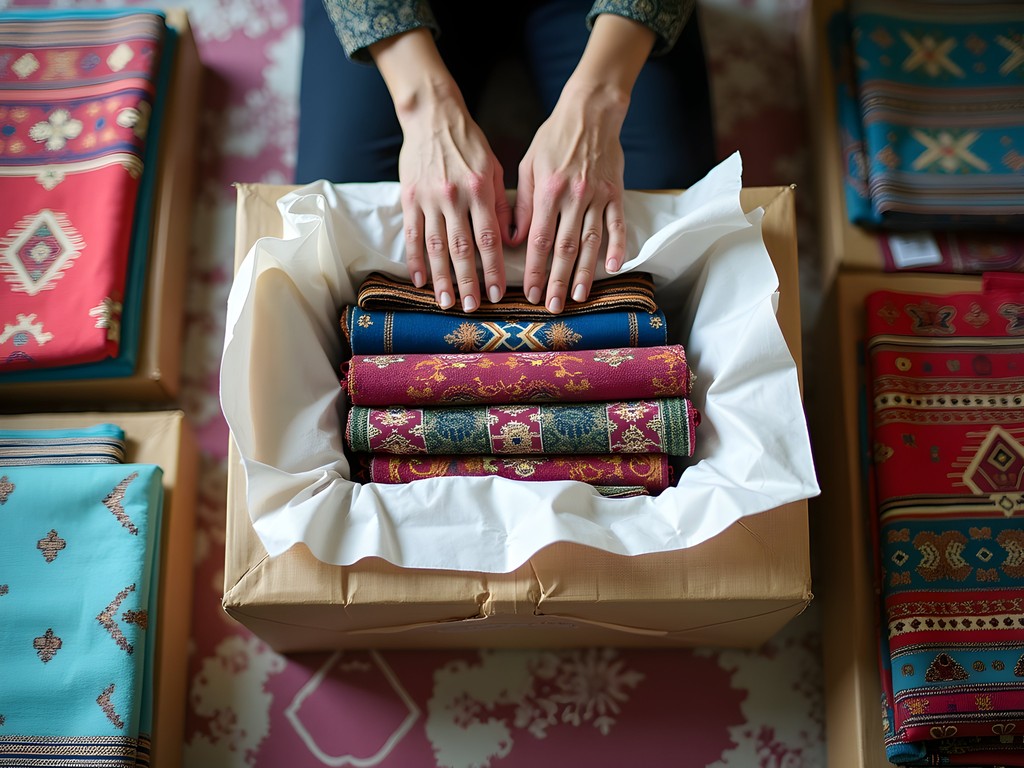
💡 Pro Tips
- Factor shipping costs into your budget calculations—they can add 15-30% to your total expense
- Ask vendors about their preferred shipping partners—many have established relationships with courier services
- Take photos of all fabrics before packing as reference and proof of condition
Final Thoughts
As I wrap my final purchases in tissue paper and squeeze them into my already-bulging suitcase, I can't help but reflect on how Faisalabad has transformed my understanding of textiles. This city—often overlooked by traditional tourists—has revealed itself as a paradise for those who speak the language of fabric and thread. Beyond the incredible value and variety, it's the human connections that make sourcing from Faisalabad special. The third-generation weaver who showed me how to identify hand-loomed versus machine-made cotton. The shop owner who invited me for chai while we discussed the revival of traditional dyeing techniques. The factory manager who proudly explained how they've implemented sustainable water practices.
Whether you're sourcing for a business or simply passionate about textiles, Faisalabad offers an authentic immersion into one of Pakistan's proudest industries. Come with empty suitcases, an open mind, and a willingness to get lost in the labyrinth of possibilities. The city's fabric markets aren't just places of commerce—they're living museums of craft and culture, waiting to be threaded into your own story.
✨ Key Takeaways
- Start at Ghanta Ghar to orient yourself before exploring the specialized fabric bazaars
- Factory direct purchasing offers the best value for larger quantities
- Building relationships with vendors leads to better prices and future sourcing opportunities
- Always test fabric samples before large purchases to verify quality and colorfastness
- Plan ahead for shipping logistics, especially for business quantities
📋 Practical Information
Best Time to Visit
October-November or February-March (avoiding summer heat and winter fog)
Budget Estimate
$300-500 for a weekend (excluding bulk fabric purchases)
Recommended Duration
2-3 days minimum for thorough market exploration
Difficulty Level
Moderate (Language Barriers And Navigation Challenges)


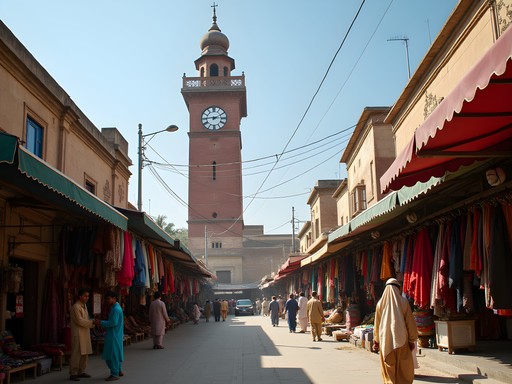

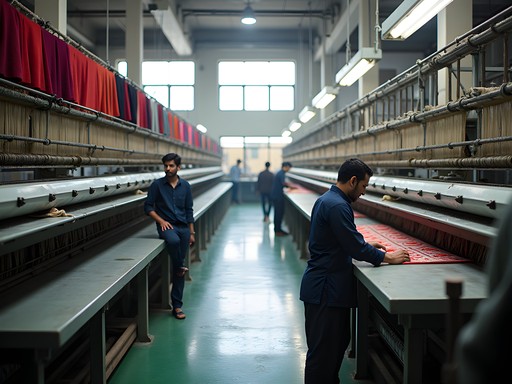




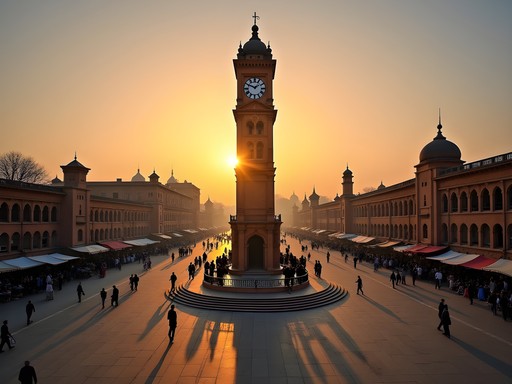


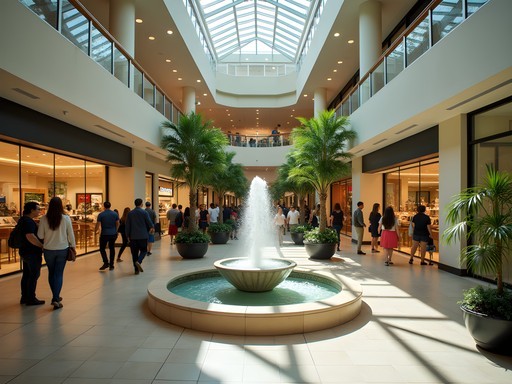


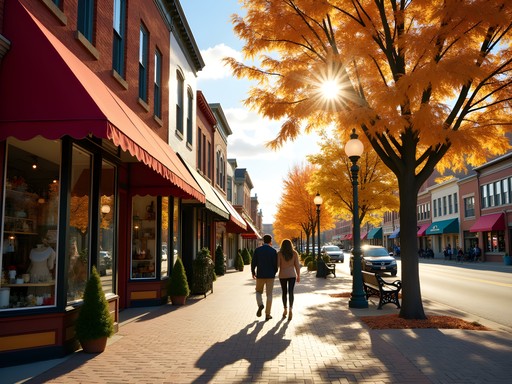
Comments
luckylife
Those fabric colors in your photos are incredible! 😍
dreamone
This is exactly what I needed! I'm planning a trip to Pakistan next year and fabric shopping is high on my list. Did you find that knowing some basic Urdu helped with the negotiations?
Aria Sanders
Yes! Even just knowing basic greetings and numbers in Urdu made a huge difference. Shopkeepers appreciated the effort and were more willing to give better prices. I used a pocket phrasebook that was super helpful.
dreamone
Thanks for the tip! Will definitely learn some key phrases before my trip.
craftymama
Pro tip: bring small US dollar bills for tipping and a calculator for quick conversions when haggling!
budget_explorer
Great post! Any recommendations for budget accommodations nearby?
pakistantraveler
Try Hotel One or Faisalabad Serena - both are decent and within 10 minutes of the markets!
budget_explorer
Thanks! Will check them out.
fashiondesigner_k
Just got back from Faisalabad and this guide would have saved me so much time! One tip to add: if you're looking for higher quality silk, the shops on the eastern side of Ghanta Ghar had better selection than the western bazaars. Also, I found bringing fabric samples from home super helpful when trying to match colors. The factory outlets mentioned in the article are definitely worth the trip - prices were about 30% lower than in the main bazaars for nearly identical fabrics. Can't wait to go back!
Aria Sanders
Thanks for adding these fantastic tips! You're absolutely right about the eastern shops - I found the same thing. Did you visit any of the smaller workshops outside the main bazaar area?
fashiondesigner_k
Yes! A shopkeeper recommended his cousin's workshop about 15 minutes away. Incredible hand-block printing happening right there! Definitely worth seeking out these smaller operations.
globetrotter99
Those fabric photos are absolutely stunning! The colors are incredible 😍
wanderingcrafter
Anyone know if it's worth hiring a local guide for the fabric markets? Or is it pretty easy to navigate on your own?
vacationhero6426
wondering this too! first timer here
Aria Sanders
I found it manageable without a guide, but if you're short on time, a local can definitely help you find specific types of fabrics faster. The markets are organized by fabric type, so once you understand the layout, it's not too overwhelming!
Sophia Gomez
Aria, your post brought back so many memories! I visited Faisalabad last year during a business trip and ended up extending my stay just to explore those incredible textile markets. The Eight Bazaars around Ghanta Ghar are truly a sensory overload - in the best possible way! I found the shopkeepers near Clock Tower to be particularly friendly when I showed genuine interest in their craftsmanship. One tip for anyone going: bring a small fabric swatch book if you're trying to match specific colors. And don't miss the smaller workshops in the side streets where you can sometimes watch the actual weaving happening. Those places often have the most unique pieces!
textileenthusiast
Did you find it easy to ship your purchases home? I'm worried about luggage space!
Sophia Gomez
Great question! Many larger shops offer shipping services, but I found it was cheaper to buy an extra duffel bag there (they sell them everywhere) and check it as additional luggage. Just leave some room in your original suitcase for the journey there!
vacationhero6426
This is exactly what I needed! Planning a trip there in October and fabric shopping is at the top of my list!
Sophia Gomez
You're going to love it! Make sure to visit early in the morning to avoid the crowds. The light is better for spotting fabric flaws too.
vacationhero6426
Thanks for the tip! How's the haggling situation? I'm terrible at it 😅
Sophia Gomez
Honestly, just be friendly and start around 40-50% of the asking price. They expect it! And don't be afraid to walk away - that's when the real deals happen.
Savannah Torres
Aria, this guide is exactly what I needed! Taking my teenage daughter on a mother-daughter trip through Pakistan next month, and Faisalabad is now definitely on our itinerary. I'm curious about luggage space though - we're traveling light with just our packing cubes but I know we'll want to bring fabrics home. Any tips on shipping options? Also, did you find any particular market better for ready-made items versus raw fabric? My daughter wants to find unique pieces she can wear right away while I'm more interested in fabrics for my home sewing projects. Your bazaar breakdown is incredibly helpful!
Aria Sanders
Hi Savannah! For shipping, I used Pakistan Post - they have a special textile rate that was quite reasonable. For ready-made items, check out the Jhang Bazaar section - lots of finished pieces there, while Katchery Bazaar had the best selection of raw fabrics for sewing projects. Hope you both have an amazing trip!
Venture X
Premium card with 2X miles, $300 travel credit, Priority Pass